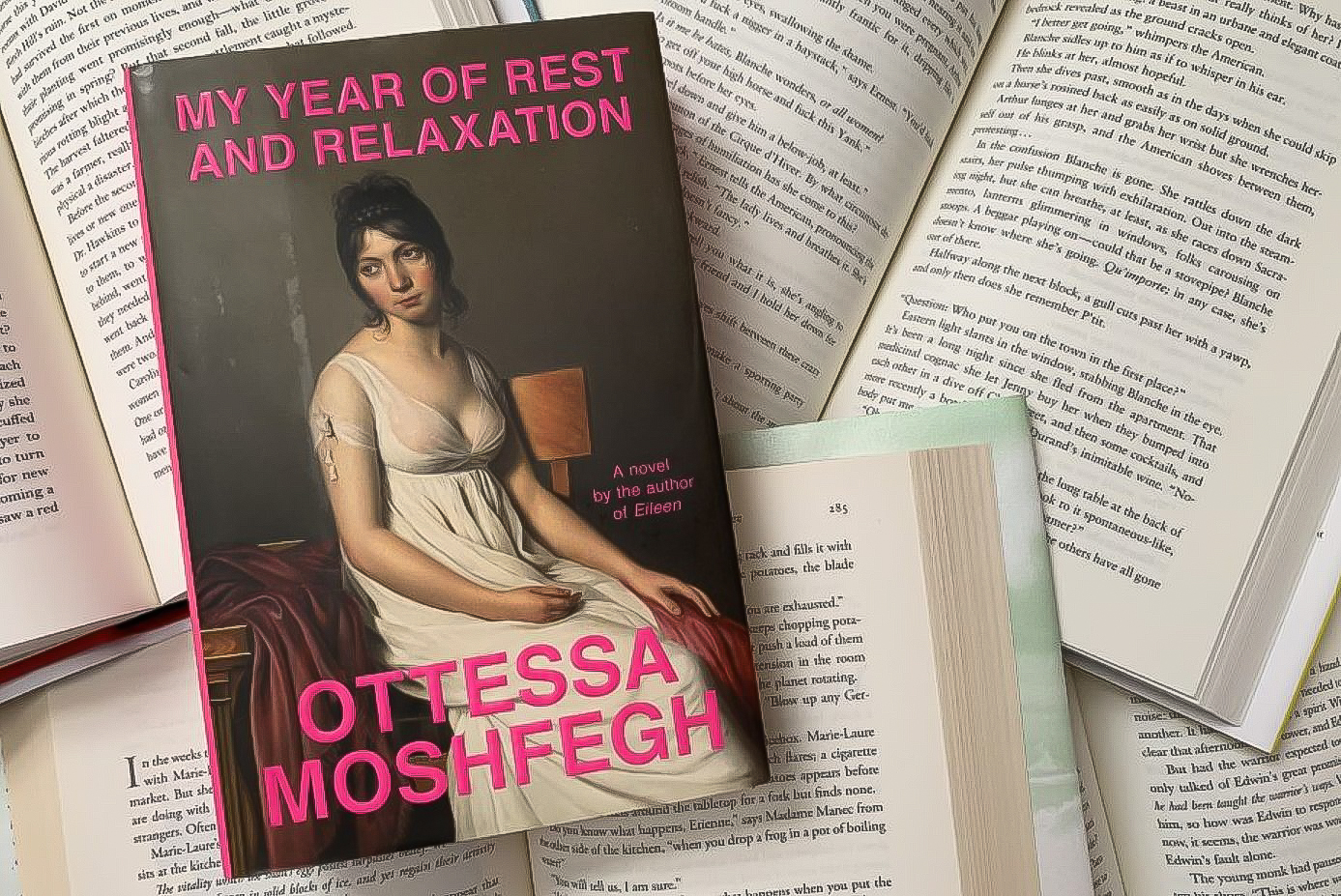My Year of Rest and Relaxation—the white woman’s American Psycho?
Trigger Warning: This article mentions sexual assault, suicide, and self-harm.
For years, I used sleep as a means of avoiding discontent. Dysthymia—a serious state of chronic depression—had rendered me uninterested in and unhappy with the affairs of everyday life. Every menial yet tedious task I engaged in—from eating, to filling my car with gas, to clocking in at work—was accompanied by a longing to return to the comfort of my bed. This troubled lifestyle drew me to read Otessa Moshfegh’s My Year of Rest and Relaxation.
The novel follows an unnamed young woman burdened with symptoms of severe mental illness. In a state of fatigue-induced dissociation, she navigates through pre-9/11 New York City, passing the days by frequenting the bodega, going to work, and grudgingly tolerating her best friend, Reva. The novel—and interestingly, its reception—demonstrates that there is a clear disconnect between public understandings of female versus male distress.
Throughout the novel, the protagonist is enamoured with sleep. To express her feelings about sleep, she narrates, “Nothing else could ever bring me such pleasure, such freedom, the power to feel and move and think and imagine, safe from the miseries of my waking consciousness.” Her obsessive rumination stems not from suicidal tendencies, but from a yearning to heal. She believes that if she could only get enough rest, she could start life anew.
Scientifically, women require slightly more sleep than men do. Poor sleep can lead to increased depression, hostility, and irritability in women—while men are not as affected. Coupled with the fact that women suffer from depression at higher rates than men—often linked with biological and socioeconomic factors such as abuse, education, and income—women can become trapped in a vicious cycle of poor mental health.
In My Year of Rest and Relaxation, the protagonist uses passive narration to illustrate traumatic experiences. From speeches about her diseased parents and childhood neglect to enduring an abusive older boyfriend, her character displays characteristics reminiscent of the “dark and troubled past” trope—one that is often used to describe female experiences. Its effects include melancholy, mourning, and extreme exhaustion.
As the novel progresses, the main character displays behaviours associated with extreme isolation. She self-medicates to induce hibernation. These self-harming acts of frustration are related to her sense of self. She does exhibit hostility toward Reva—adding a layer of complexity to her character.
Moshfegh was inspired by Bret Easton Ellis’s American Psycho. The dreary, uber-materialistic atmosphere of New York City in the early-2000s is one common element between both novels. More so, both novels include generally surface-level interpersonal relationships between their characters.
Amid the similarities, comparing Moshfegh’s protagonist to Ellis’s Patrick Bateman would be unhinged. While Moshfegh’s character’s unhealthy behaviour is related to self-harm and ruminating on sleep, Ellis’s narrations fill several pages with depictions of graphic sexual assault. Bateman also spews violent hatred towards African-American people, homeless individuals, and homosexuals.
In the arts, female characters are presented as erotic symbols for male pleasure—as is evident in books like American Psycho. Character-driven novels that explore women as complex and multifaceted individuals break from this pattern.
My Year of Rest and Relaxation encompasses female fatigue and tragedy. It hints towards society’s misogynistic past by addressing these concepts with lobotomies, institutionalization, and bedrest. American Psycho encompasses pornography-induced male violence and woman-hatred, with so much gore that it loses its shock value.
In my opinion, the qualitative differences between each novel are ignored—only the superficial similarities are highlighted. As a result of the absurd and ignorant narrations by Moshfegh’s character, readers and critics liken her to Bateman, a misogynistic terrorist. How can an unlikeable woman be culturally compared to a serial killer? I think woman-hating in the arts is to blame.

